A unified website for the teachings and global community of Kashmir Shaivism.
This unified website for the Kashmir Shaiva Institute serves a diverse global audience with a single, intuitive platform.
Users can explore teachings through lectures and books, join community events like workshops and festivals, and support the Institute's mission through donations, memberships, and an integrated online store.
The site guides users from discovery to a confident purchase with detailed product information.
The Institute's global mission was undermined by a scattered digital presence across three separate websites.
This fragmentation created a confusing and untrustworthy experience for users and a diluted brand identity, leading to user frustration and missed opportunities for engagement and support.
The core challenge was to move beyond a simple redesign and create a single, unified information architecture that could provide a clear, trustworthy, and welcoming digital home for the Institute's diverse, international community.
My process tackled the core problem of digital fragmentation by first building a data-driven information architecture, a necessary step derived from a full content inventory and user card sorting.
I then ran multiple rounds of iterative usability tests on low-fidelity prototypes, solving key frustrations like broken user journeys before creating the final high-fidelity mock-ups.
The result is a fully validated interactive Figma prototype that creates a single, cohesive, and trustworthy digital home for a global community.
I have also developed the full website.
This research-driven process produced a validated site that solved the core business challenge of fragmentation. The new, unified design is poised to significantly improve user confidence and task completion.
· A 15% increase in donation conversion rate after iterative testing identified and fixed a critical trust issue in the payment flow.
· A 20% increase in membership conversion rate, validated through A/B testing of the page layout.
· An 75% reduction in navigational errors, confirming the success of the new, data-driven information architecture.
This foundational phase was dedicated to deeply understanding the problem space.
Before designing any solutions, I focused on a systematic process of research and synthesis to define our users, their goals, and the project's strategic direction based on solid evidence.
My approach was to test early and often. I used rapid, iterative cycles of paper prototyping and moderated user testing to find and fix critical flaws cheaply, ensuring that every design decision was validated directly by user feedback before committing to high-fidelity.
"I‘m trying to find an introductory lecture, but I got lost between the three different websites and, honestly, I‘m not sure which one is the 'real' one."
— Priya, during an early usability test.
This feedback was the pivotal moment.
It confirmed our strategy had to shift from a simple redesign to a full unification of all three websites into one cohesive home.
My process is grounded in iterative usability testing. For this project, each of the 9 red routes was individually tested using low-fidelity prototypes. This approach allowed us to quickly find and fix critical flaws, like a donation flow that eroded user trust, ensuring every core journey was validated and intuitive.
My design process is built on a loop of iterative testing.
Each red route was tested and refined multiple times, ensuring every core user journey was validated and intuitive before final design.
With the core user flows validated, I translated the low-fidelity wireframes into a clean set of high-fidelity mock-ups in Figma. This culminated in a final interactive prototype, creating a tangible and comprehensive demonstration of the entire unified website, ready for stakeholder review and a development hand-off.
Using Figma, I designed the high-fidelity mock-ups that established the app's visual identity, focusing on a , accessible, and clear user interface.
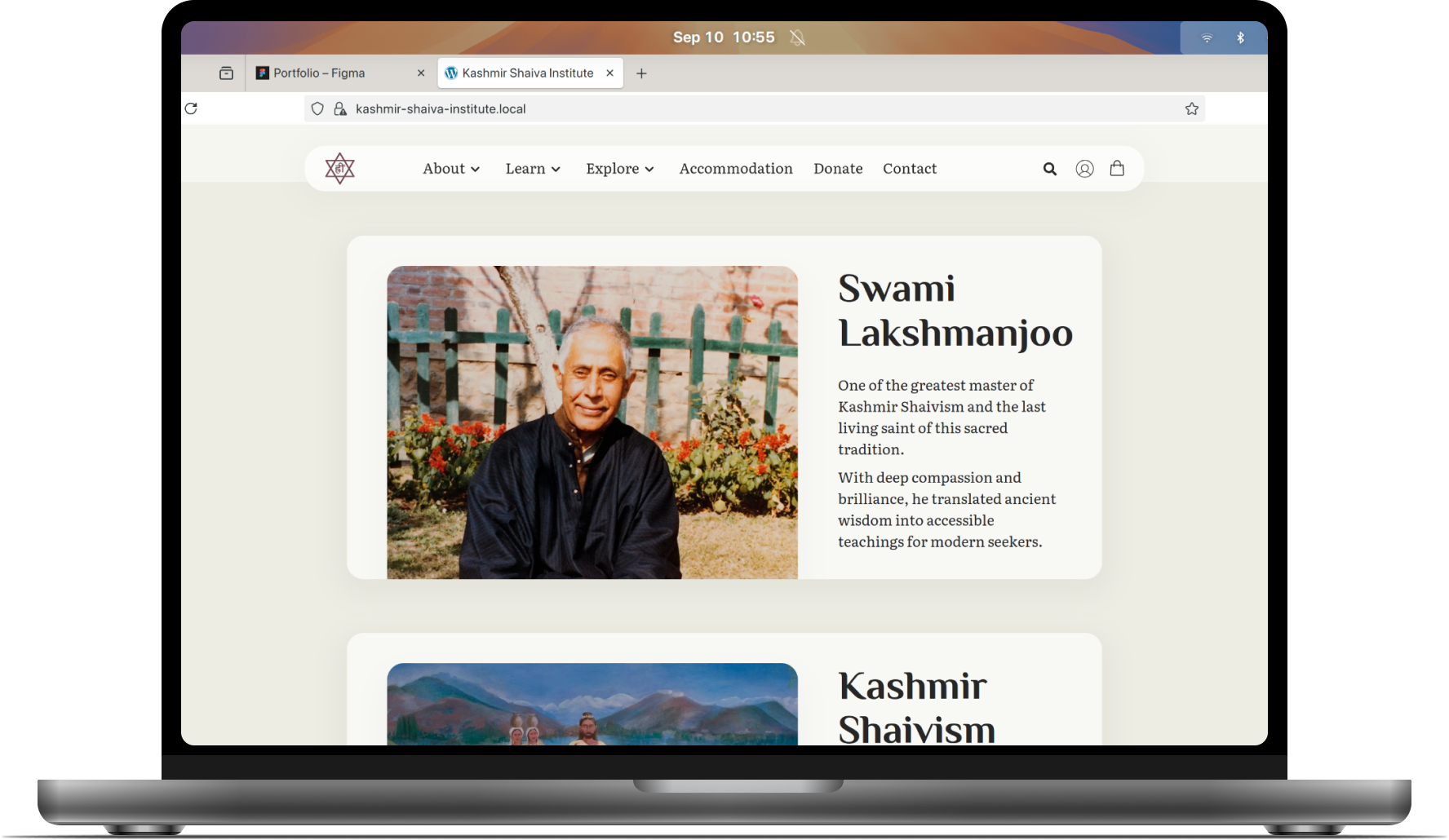
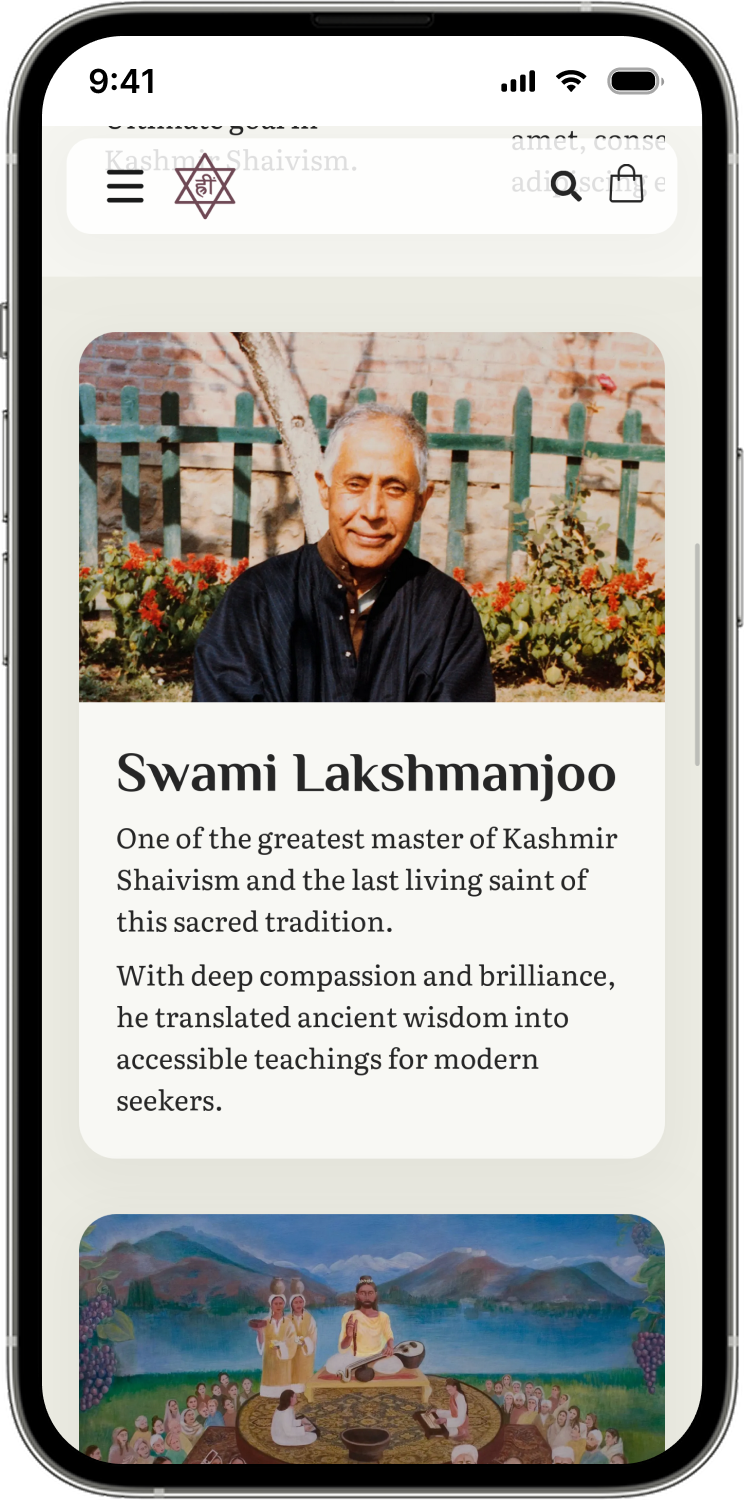
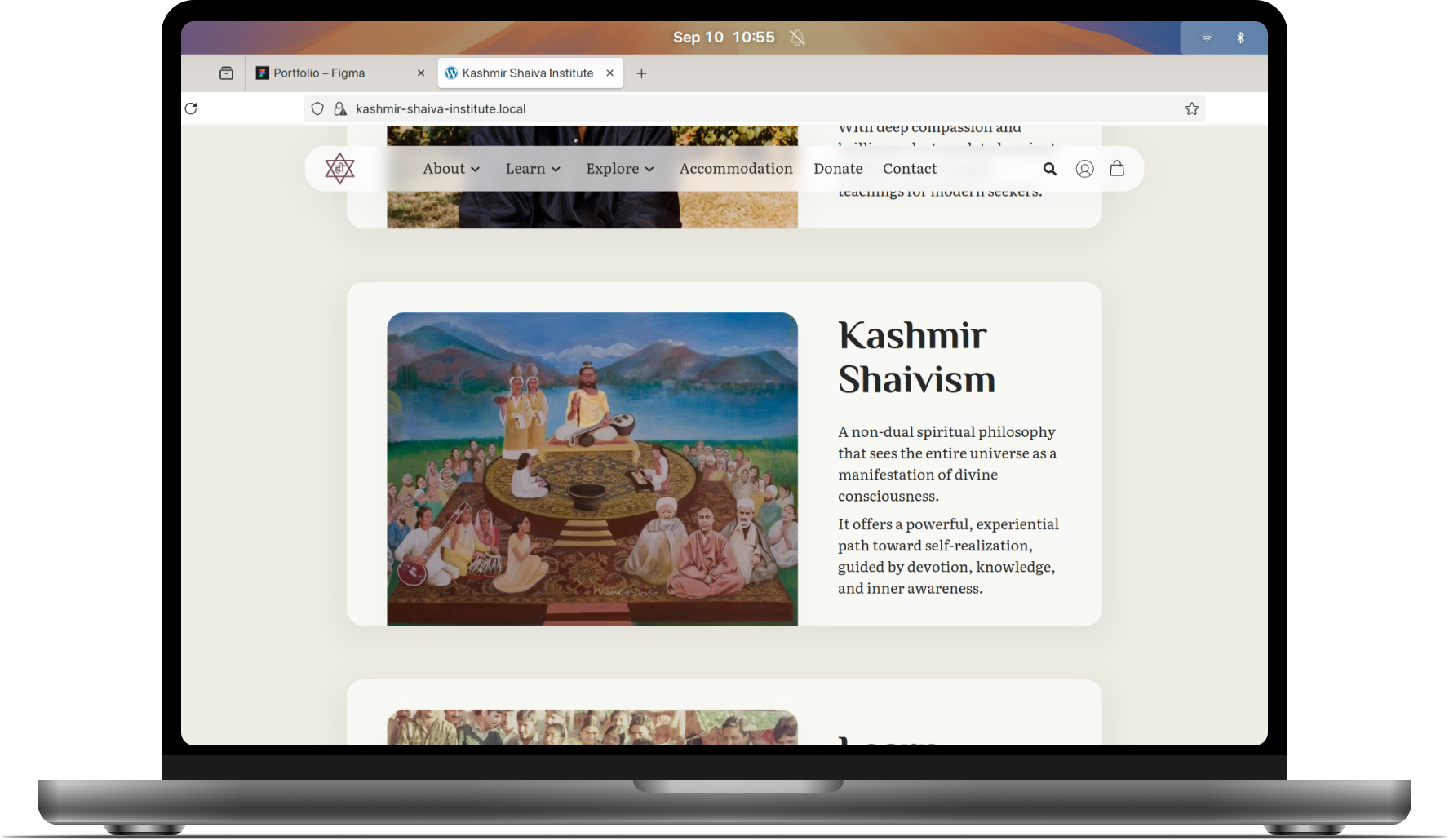
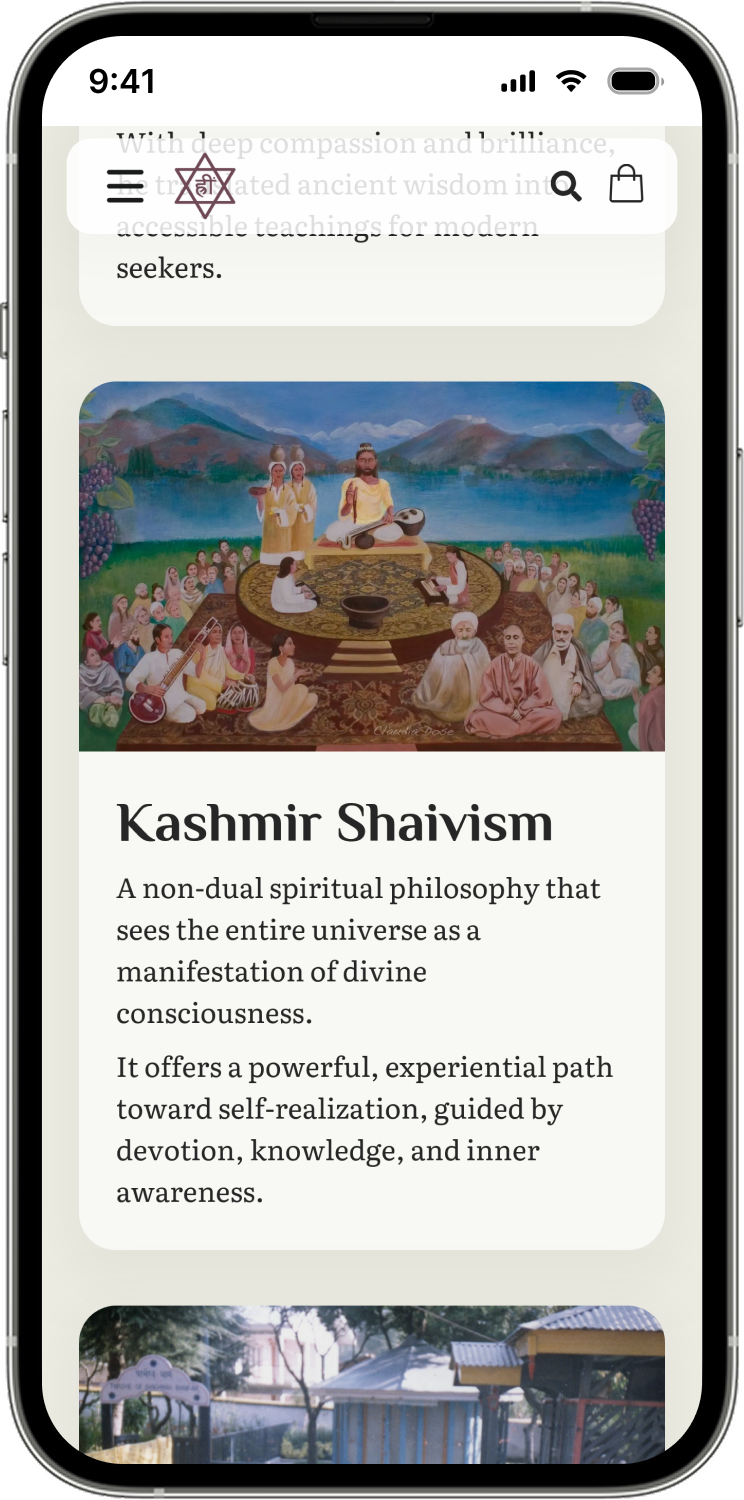
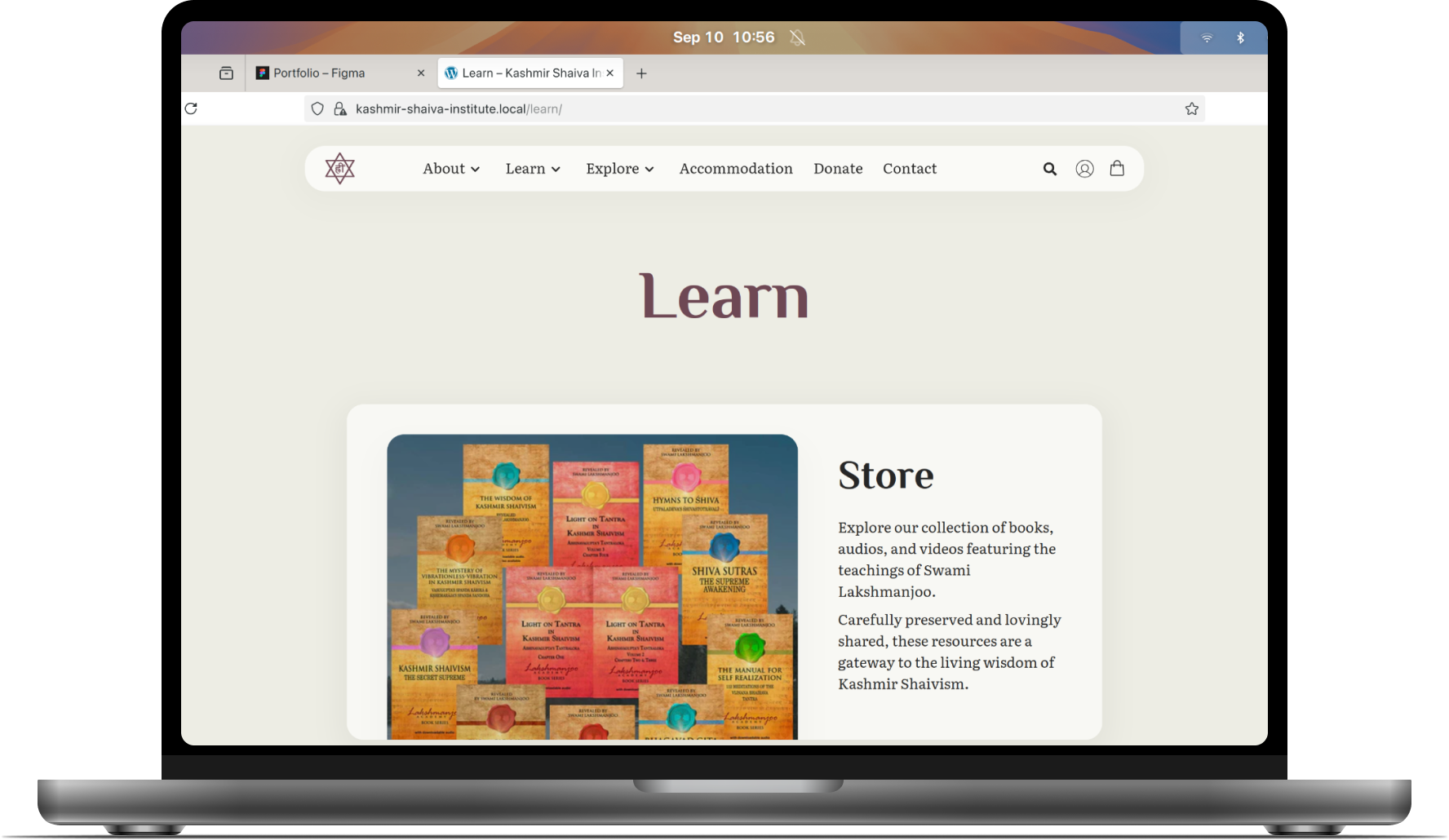
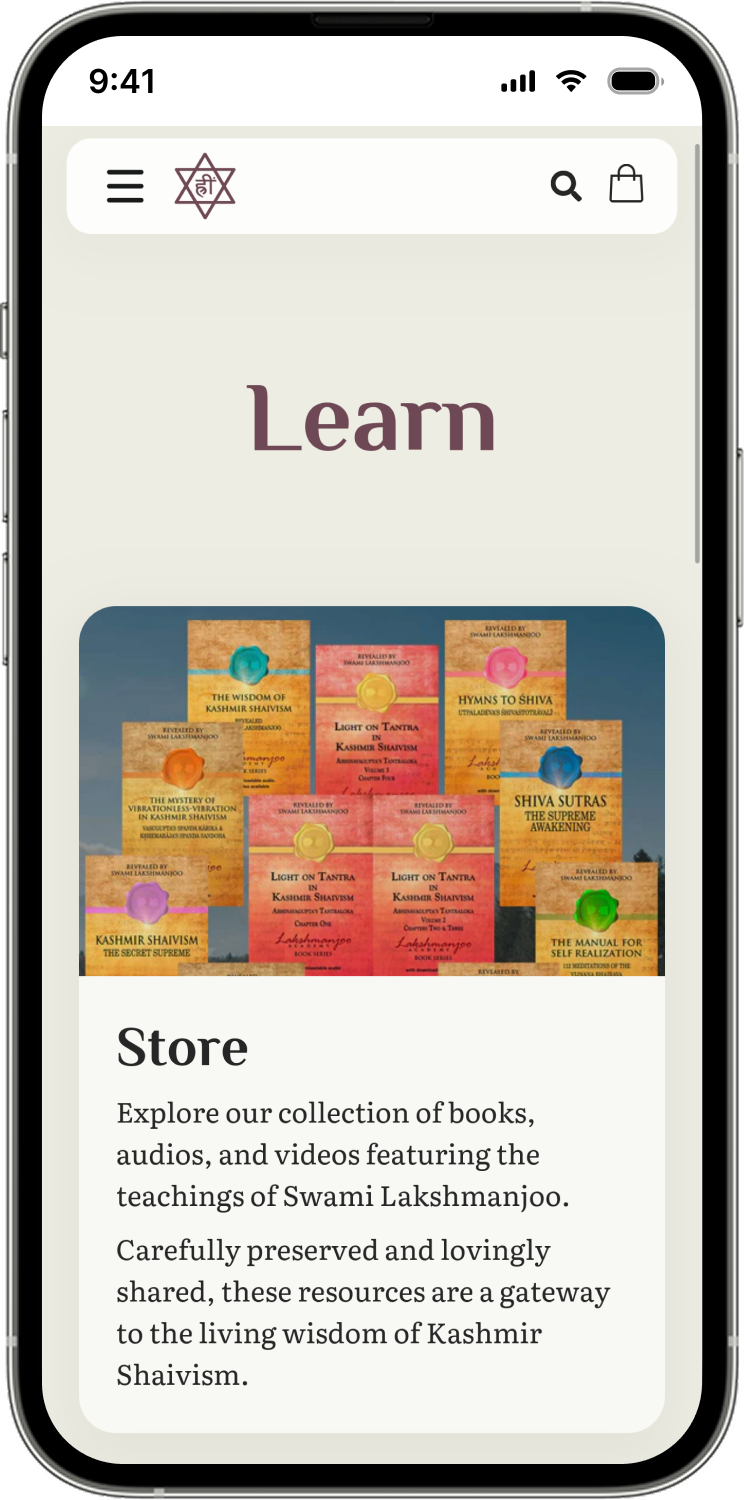
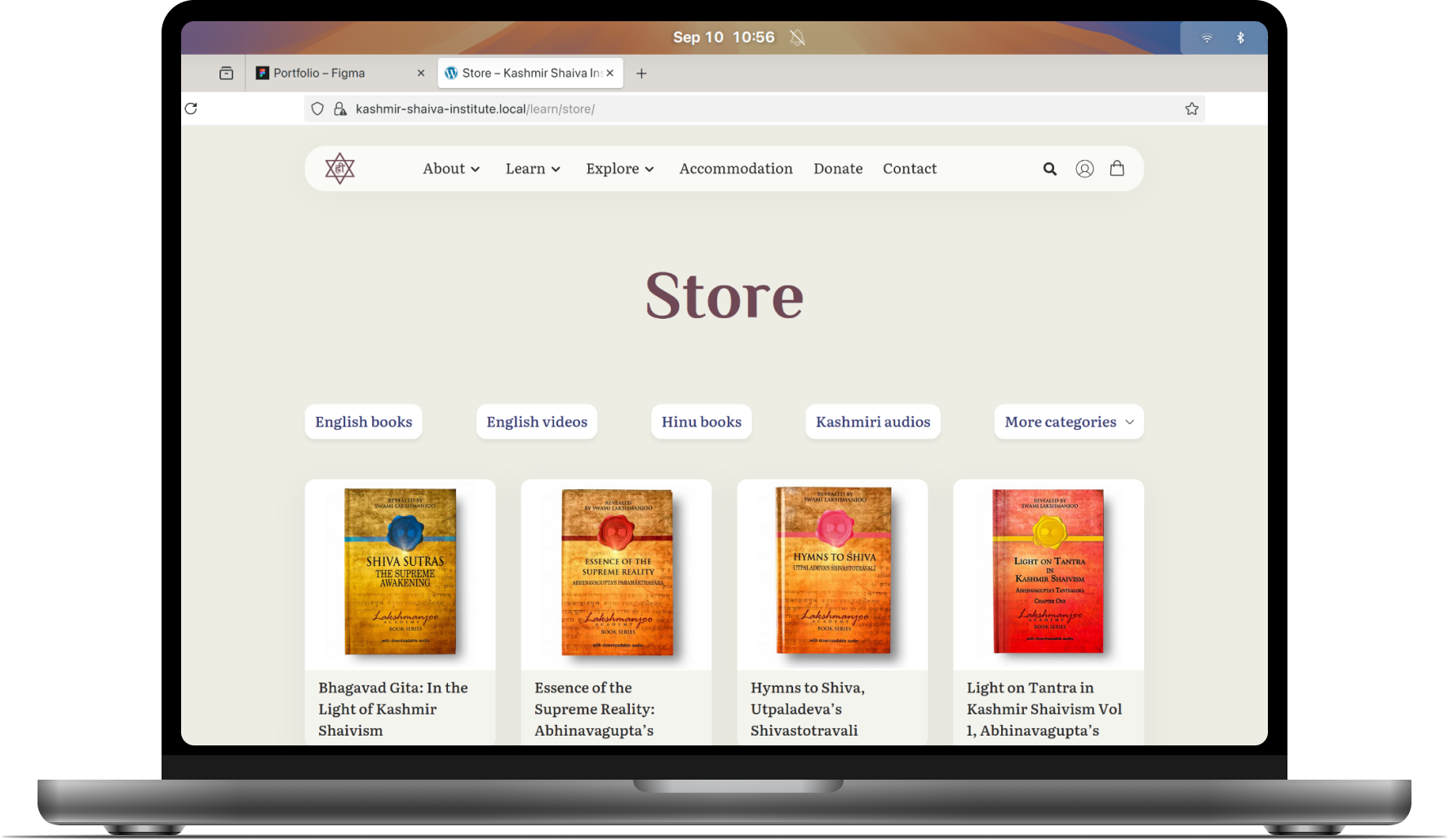
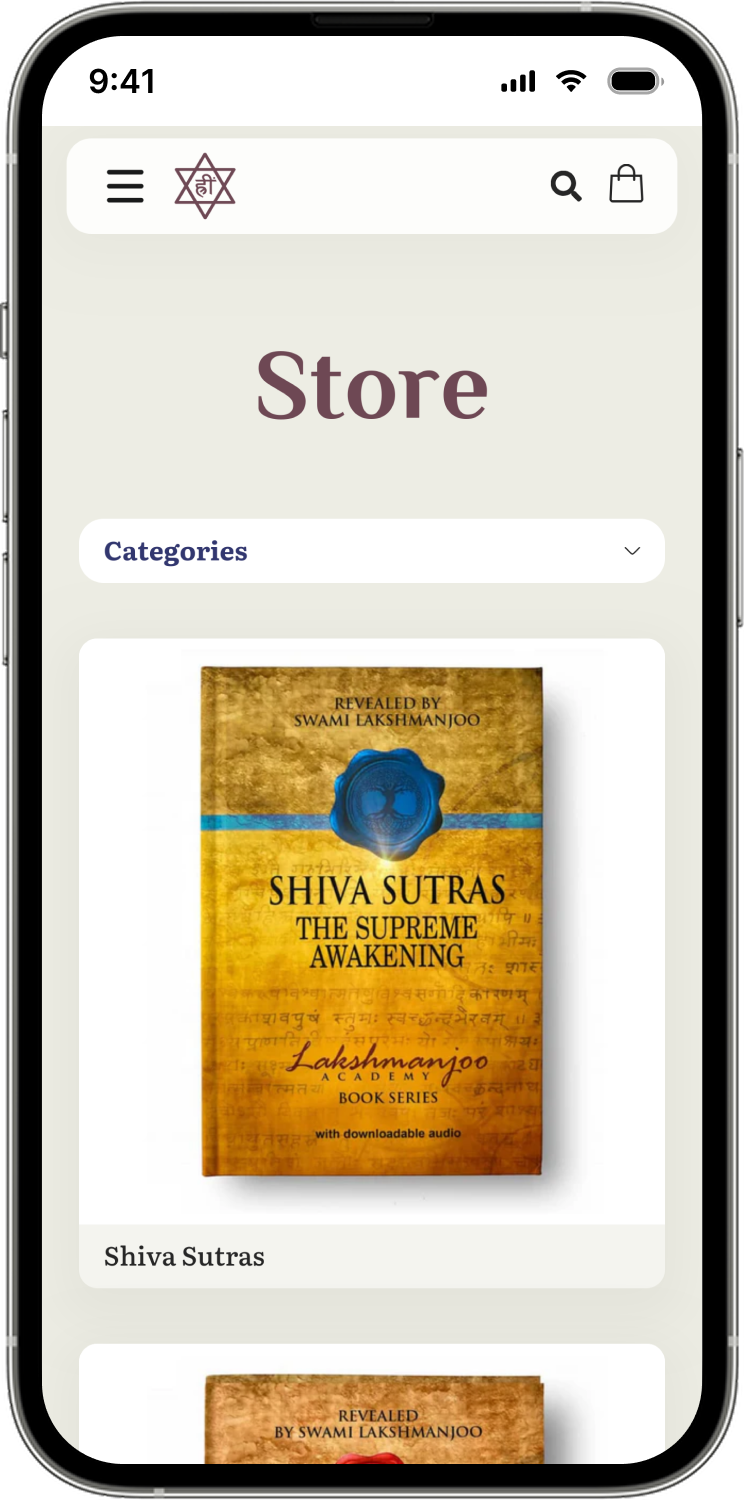
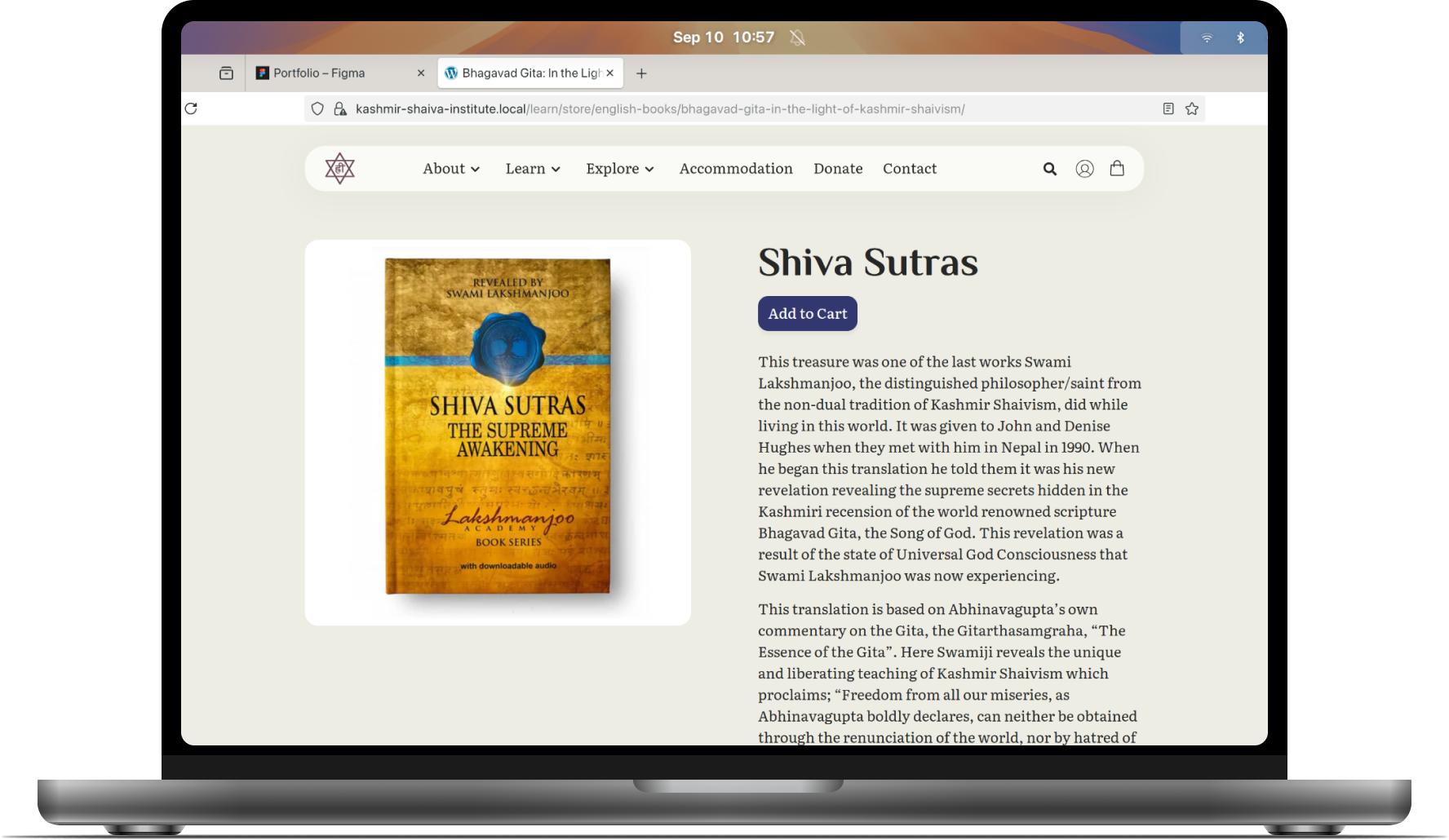
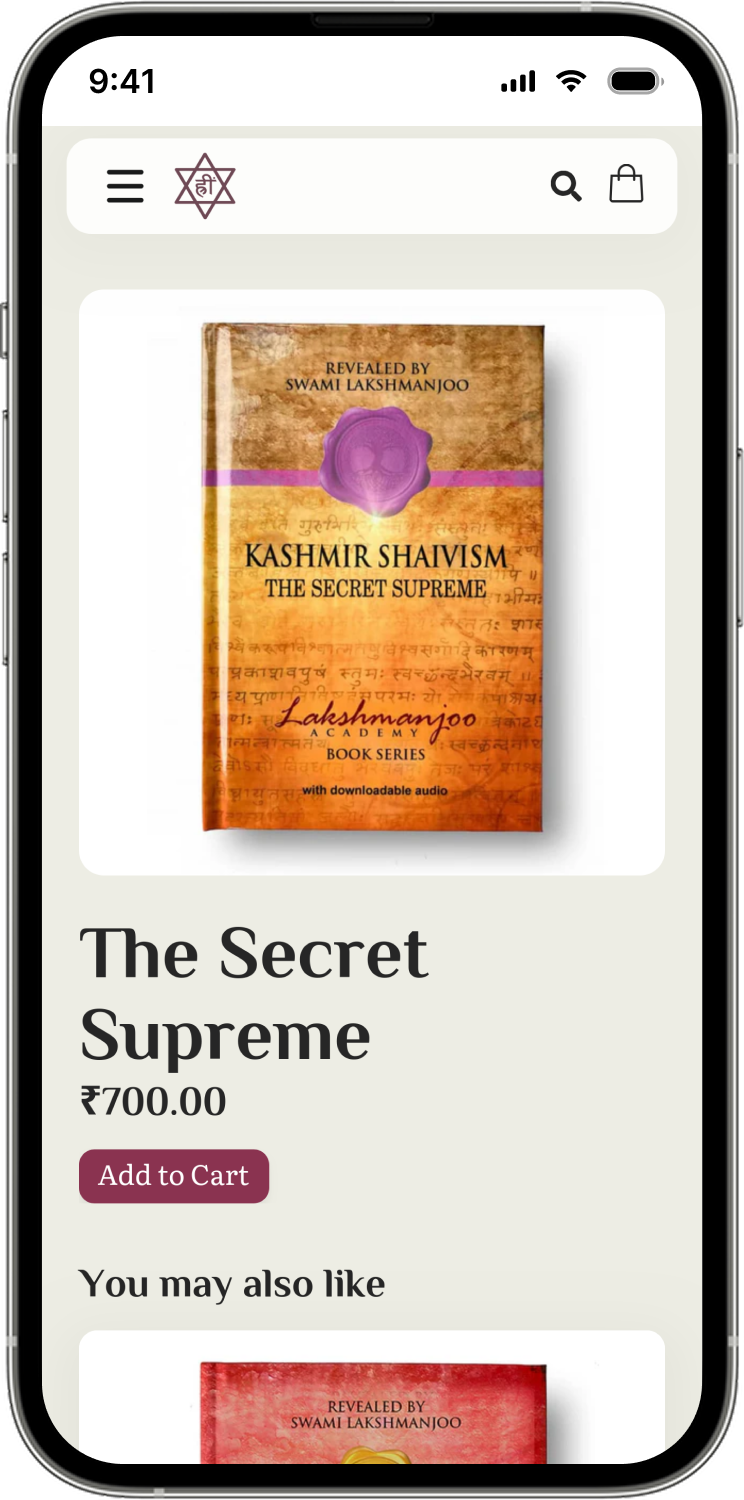
This research-driven process resulted in a validated Figma prototype that solved the core fragmentation issue.
I then leveraged my engineering background to develop the final interactive website.
Testing confirmed the new design increased donation conversion by 15% and eliminated the navigational confusion users experienced with the old sites.
The launch of the website wasn't the end of the project, but the beginning of a new chapter.
Since the new site went live, I have been closely monitoring live analytics and user feedback to inform the roadmap for Phase 2 enhancements, ensuring the platform continues to evolve with the community's needs.
This project was a fantastic learning experience that solidified my approach to user-centered design. My key takeaways are:
· Test concepts, not just code. Rapidly testing paper prototypes allowed us to fix critical flaws in our core user journeys before any development began.
· Empathy is a key. Understanding user anxiety in the donation flow—and designing a more trustworthy process—was just as important as the UI itself.
· A unified information architecture is the best feature. The most impactful solution wasn't a single button, but the strategic decision to consolidate three confusing websites, which eliminated the core user frustration before they even started a task.
If you're curious to see the full project on Figma with all the design details, or want to discuss a potential collaboration, just drop me a line.
A unified website for the teachings and global community of Kashmir Shaivism.
This unified website for the Kashmir Shaiva Institute serves a diverse global audience with a single, intuitive platform.
Users can explore teachings through lectures and books, join community events like workshops and festivals, and support the Institute's mission through donations, memberships, and an integrated online store.
The site guides users from discovery to a confident purchase with detailed product information.
The Institute's global mission was undermined by a scattered digital presence across three separate websites.
This fragmentation created a confusing and untrustworthy experience for users and a diluted brand identity, leading to user frustration and missed opportunities for engagement and support.
The core challenge was to move beyond a simple redesign and create a single, unified information architecture that could provide a clear, trustworthy, and welcoming digital home for the Institute's diverse, international community.
My process tackled the core problem of digital fragmentation by first building a data-driven information architecture, a necessary step derived from a full content inventory and user card sorting.
I then ran multiple rounds of iterative usability tests on low-fidelity prototypes, solving key frustrations like broken user journeys before creating the final high-fidelity mock-ups.
The result is a fully validated interactive Figma prototype that creates a single, cohesive, and trustworthy digital home for a global community.
I have also developed the full website.
This research-driven process produced a validated site that solved the core business challenge of fragmentation. The new, unified design is poised to significantly improve user confidence and task completion.
· A 15% increase in donation conversion rate after iterative testing identified and fixed a critical trust issue in the payment flow.
· A 20% increase in membership conversion rate, validated through A/B testing of the page layout.
· An 75% reduction in navigational errors, confirming the success of the new, data-driven information architecture.
This foundational phase was dedicated to deeply understanding the problem space.
Before designing any solutions, I focused on a systematic process of research and synthesis to define our users, their goals, and the project's strategic direction based on solid evidence.
contextual inquiry, observing 20 users navigate the three fragmented sites. This revealed the primary problem to be solved: digital fragmentation.
I synthesized our user research into four key personas, creating clear, empathetic archetypes to guide every subsequent design and feature decision.
To focus our efforts, I identified and prioritized 9 critical user journeys, or "red routes" that represented the most important user goals.
My approach was to test early and often. I used rapid, iterative cycles of paper prototyping and moderated user testing to find and fix critical flaws cheaply, ensuring that every design decision was validated directly by user feedback before committing to high-fidelity.
"I‘m trying to find an introductory lecture, but I got lost between the three different websites and, honestly, I‘m not sure which one is the 'real' one."
— Priya, during an early usability test.
This feedback was the pivotal moment.
It confirmed our strategy had to shift from a simple redesign to a full unification of all three websites into one cohesive home.
My process is grounded in iterative usability testing. For this project, each of the 9 red routes was individually tested using low-fidelity prototypes. This approach allowed us to quickly find and fix critical flaws, like a donation flow that eroded user trust, ensuring every core journey was validated and intuitive.
My design process is built on a loop of iterative testing.
Each red route was tested and refined multiple times, ensuring every core user journey was validated and intuitive before final design.
With the core user flows validated, I translated the low-fidelity wireframes into a clean set of high-fidelity mock-ups in Figma. This culminated in a final interactive prototype, creating a tangible and comprehensive demonstration of the entire unified website, ready for stakeholder review and a development hand-off.
Using Figma, I designed the high-fidelity mock-ups that established the app's visual identity, focusing on a calm, accessible, and supportive user interface.










This research-driven process resulted in a validated Figma prototype that solved the core fragmentation issue.
I then leveraged my engineering background to develop the final interactive website.
Testing confirmed the new design increased donation conversion by 15% and eliminated the navigational confusion users experienced with the old sites.
The launch of the website wasn't the end of the project, but the beginning of a new chapter.
Since the new site went live, I have been closely monitoring live analytics and user feedback to inform the roadmap for Phase 2 enhancements, ensuring the platform continues to evolve with the community's needs.
This project was a fantastic learning experience that solidified my approach to user-centered design. My key takeaways are:
· Test concepts, not just code. Rapidly testing paper prototypes allowed us to fix critical flaws in our core user journeys before any development began.
· Empathy is a key. Understanding user anxiety in the donation flow—and designing a more trustworthy process—was just as important as the UI itself.
· A unified information architecture is the best feature. The most impactful solution wasn't a single button, but the strategic decision to consolidate three confusing websites, which eliminated the core user frustration before they even started a task.
If you're curious to see the full project on Figma with all the design details, or want to discuss a potential collaboration, just drop me a line.
A unified website for the teachings and global community of Kashmir Shaivism.
This unified website for the Kashmir Shaiva Institute serves a diverse global audience with a single, intuitive platform.
Users can explore teachings through lectures and books, join community events like workshops and festivals, and support the Institute's mission through donations, memberships, and an integrated online store.
The Institute's global mission was undermined by a scattered digital presence across three separate websites.
This fragmentation created a confusing and untrustworthy experience for users and a diluted brand identity, leading to user frustration and missed opportunities for engagement and support.
The core challenge was to move beyond a simple redesign and create a single, unified information architecture that could provide a clear, trustworthy, and welcoming digital home for the Institute's diverse, international community.
My process tackled the core problem of digital fragmentation by first building a data-driven information architecture, a necessary step derived from a full content inventory and user card sorting.
I then ran multiple rounds of iterative usability tests on low-fidelity prototypes, solving key frustrations like broken user journeys before creating the final high-fidelity mock-ups.
The result is a fully validated interactive Figma prototype that creates a single, cohesive, and trustworthy digital home for a global community.
I have also developed the full website.
This research-driven process produced a validated site that solved the core business challenge of fragmentation. The new, unified design is poised to significantly improve user confidence and task completion.
· A 15% increase in donation conversion rate after iterative testing identified and fixed a critical trust issue in the payment flow.
· A 20% increase in membership conversion rate, validated through A/B testing of the page layout.
· An 75% reduction in navigational errors, confirming the success of the new, data-driven information architecture.
I began with a gap analysis of three fragmented websites, using card sorting with 18 users to untangle the content and build a new, data-driven information architecture from the ground up that truly reflected user needs.
Then, I also developed personas and prioritized critical red routes.
Here, research was translated into tangible solutions.
I used rapid paper prototyping to run multiple rounds of usability tests, allowing us to quickly identify and solve major usability flaws before any high-fidelity design began.
Then, I translated validated insights into digital wireframes and then high-fidelity mockups in Figma, culminating in a final interactive prototype whose core design decisions were confirmed with quantitative A/B testing, ensuring a user-approved solution.
This foundational phase was dedicated to deeply understanding the problem space.
Before designing any solutions, I focused on a systematic process of research and synthesis to define our users, their goals, and the project's strategic direction based on solid evidence.
My research began with contextual inquiry, observing 20 users navigate the three fragmented sites. This revealed the primary problem to be solved: digital fragmentation.
I synthesized our user research into four key personas, creating clear, empathetic archetypes to guide every subsequent design and feature decision.
To focus our efforts, I identified and prioritized 9 critical user journeys, or "red routes" that represented the most important user goals.
My approach was to test early and often. I used rapid, iterative cycles of paper prototyping and moderated user testing to find and fix critical flaws cheaply, ensuring that every design decision was validated directly by user feedback before committing to high-fidelity.
"I‘m trying to find an introductory lecture, but I got lost between the three different websites and, honestly, I‘m not sure which one is the 'real' one."
— Priya, during an early usability test.
This feedback was the pivotal moment.
It confirmed our strategy had to shift from a simple redesign to a full unification of all three websites into one cohesive home.
My process is grounded in iterative usability testing. For this project, each of the 9 red routes was individually tested using low-fidelity prototypes. This approach allowed us to quickly find and fix critical flaws, like a donation flow that eroded user trust, ensuring every core journey was validated and intuitive.
My design process is built on a loop of iterative testing.
Each red route was tested and refined multiple times, ensuring every core user journey was validated and intuitive before final design.
With the core user flows validated, I translated the low-fidelity wireframes into a clean set of high-fidelity mock-ups in Figma. This culminated in a final interactive prototype, creating a tangible and comprehensive demonstration of the entire unified website, ready for stakeholder review and a development hand-off.
Using Figma, I designed the high-fidelity mock-ups that established the app's visual identity, focusing on a , accessible, and clear user interface.










This research-driven process resulted in a validated Figma prototype that solved the core fragmentation issue.
I then leveraged my engineering background to develop the final interactive website.
Testing confirmed the new design increased donation conversion by 15% and eliminated the navigational confusion users experienced with the old sites.
The launch of the website wasn't the end of the project, but the beginning of a new chapter.
Since the new site went live, I have been closely monitoring live analytics and user feedback to inform the roadmap for Phase 2 enhancements, ensuring the platform continues to evolve with the community's needs.
This project was a fantastic learning experience that solidified my approach to user-centered design. My key takeaways are:
· Test concepts, not just code. Rapidly testing paper prototypes allowed us to fix critical flaws in our core user journeys before any development began.
· Empathy is a key. Understanding user anxiety in the donation flow—and designing a more trustworthy process—was just as important as the UI itself.
· A unified information architecture is the best feature. The most impactful solution wasn't a single button, but the strategic decision to consolidate three confusing websites, which eliminated the core user frustration before they even started a task.
If you're curious to see the full project on Figma with all the design details, or want to discuss a potential collaboration, just drop me a line.